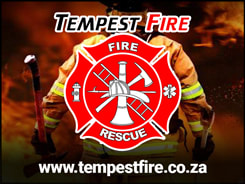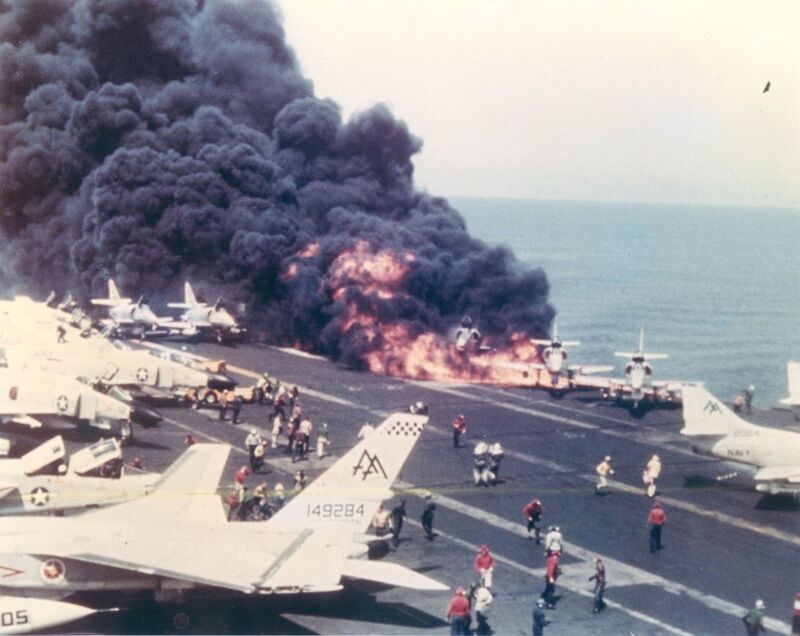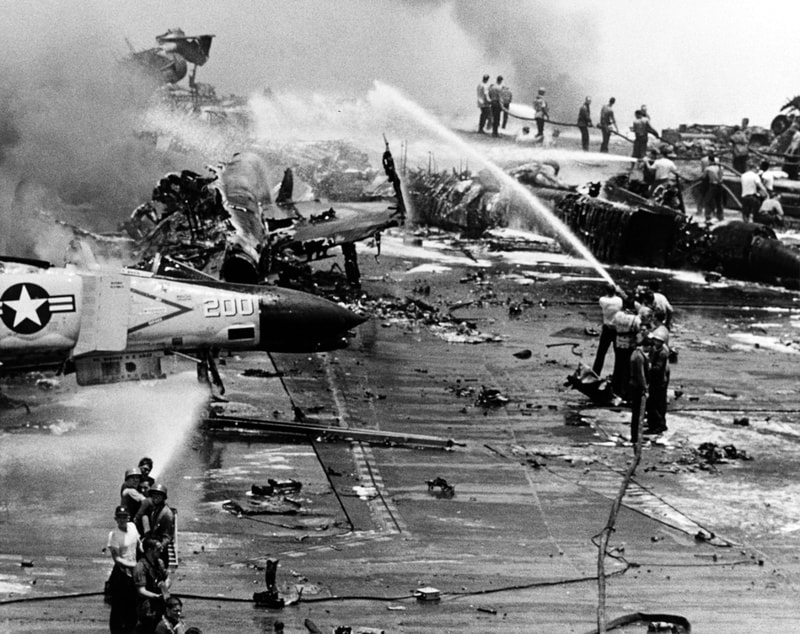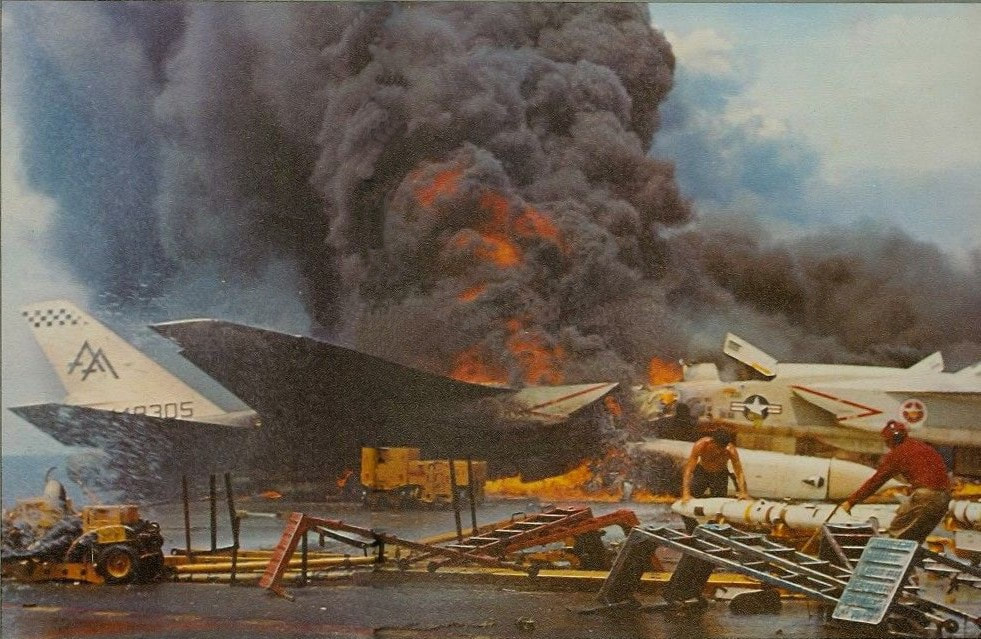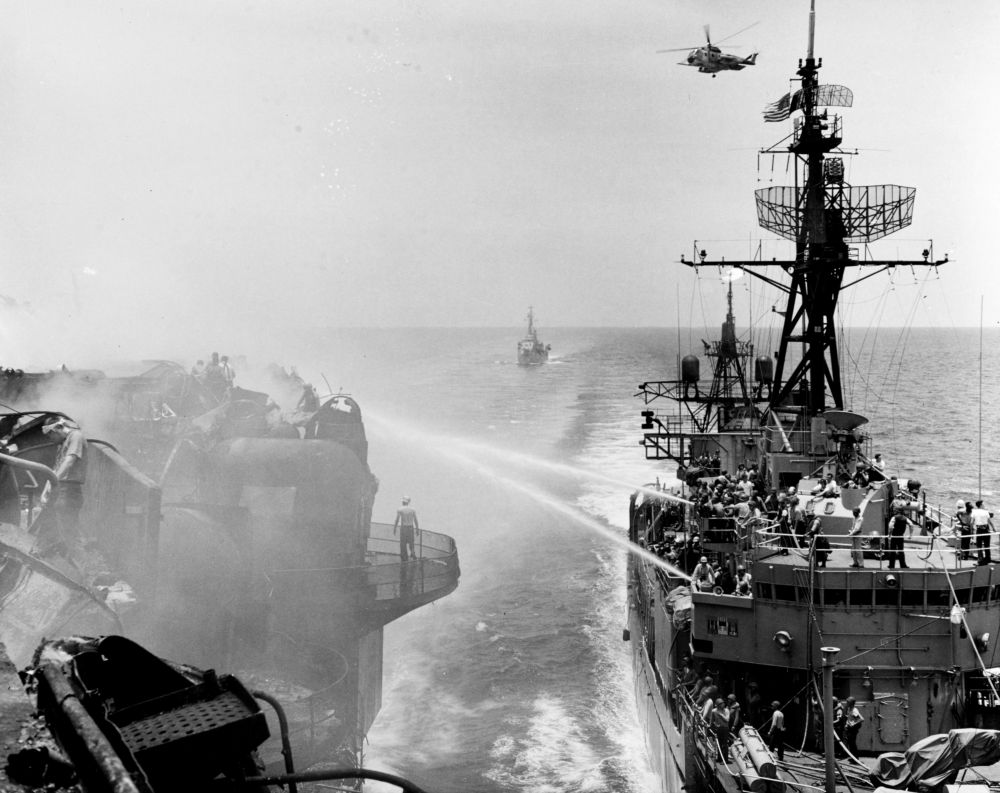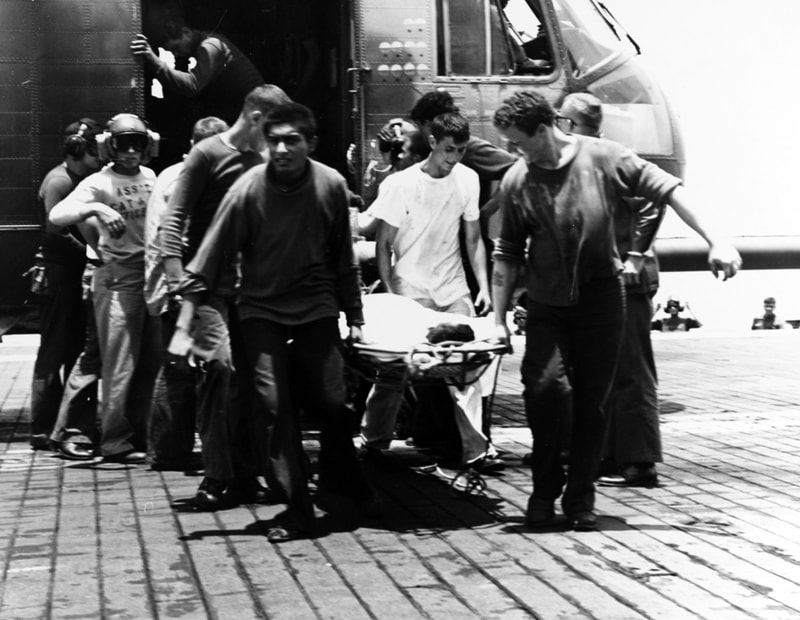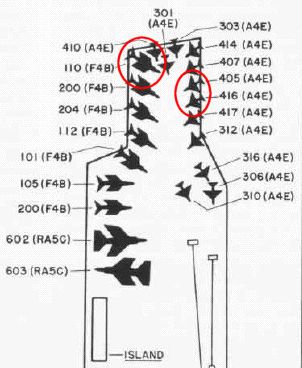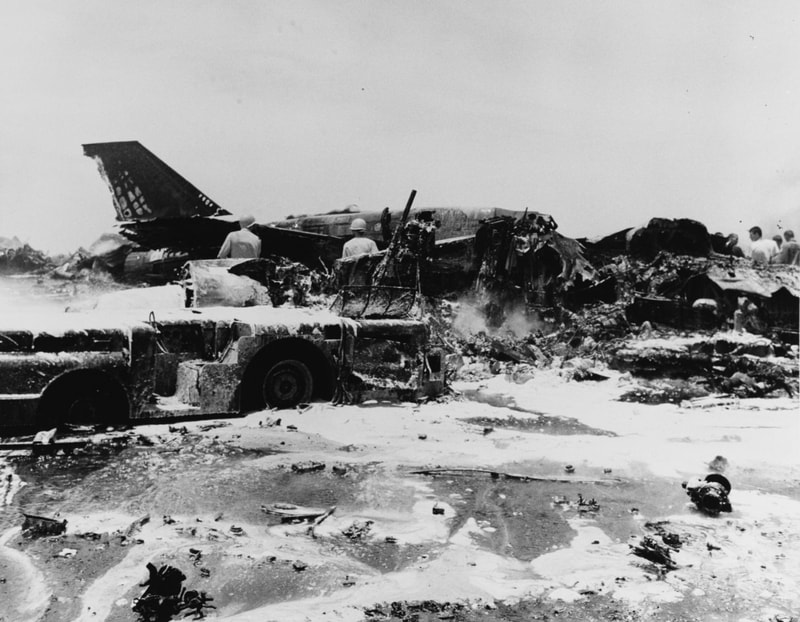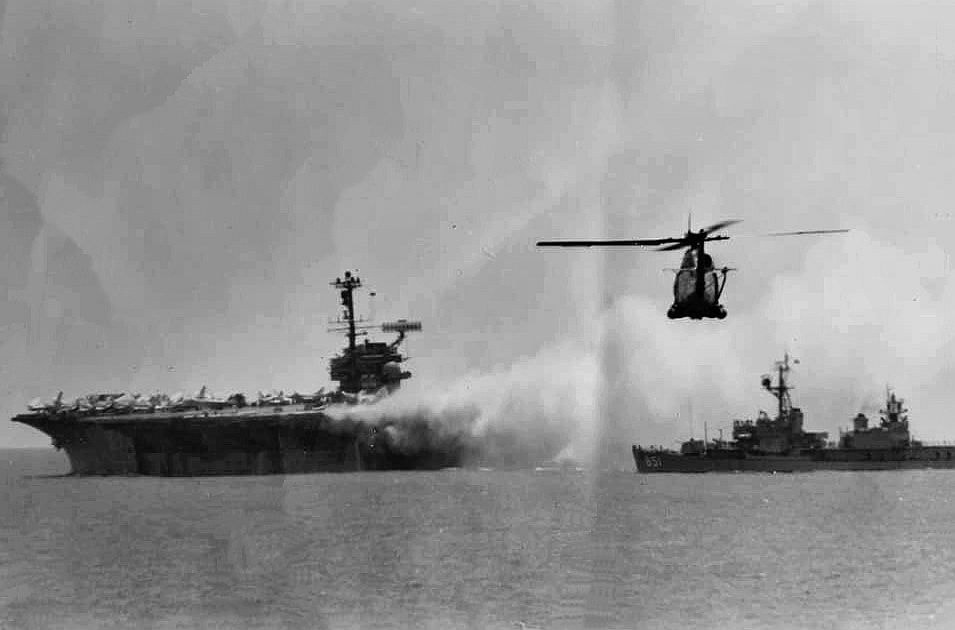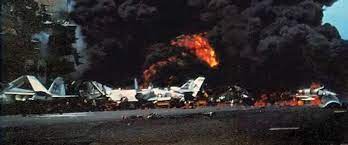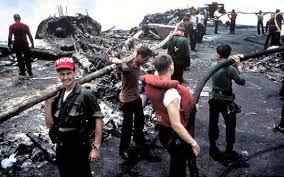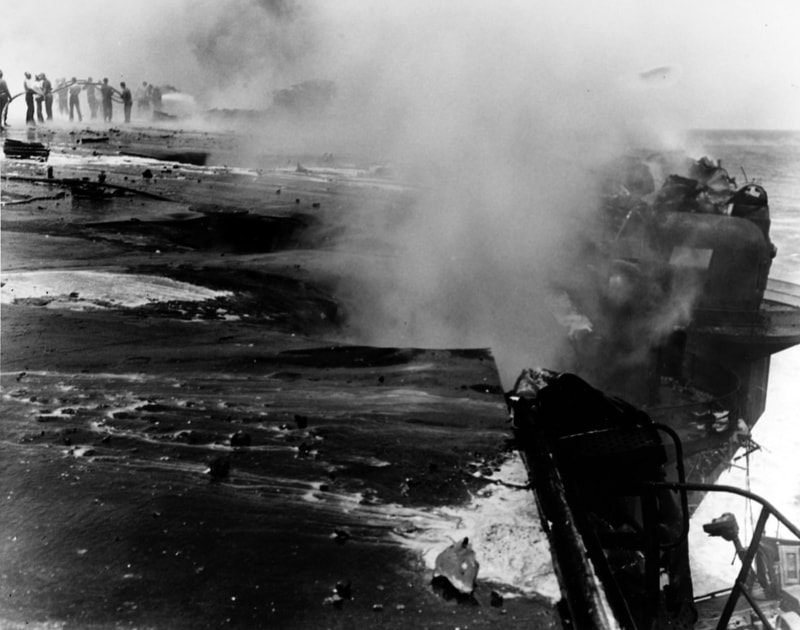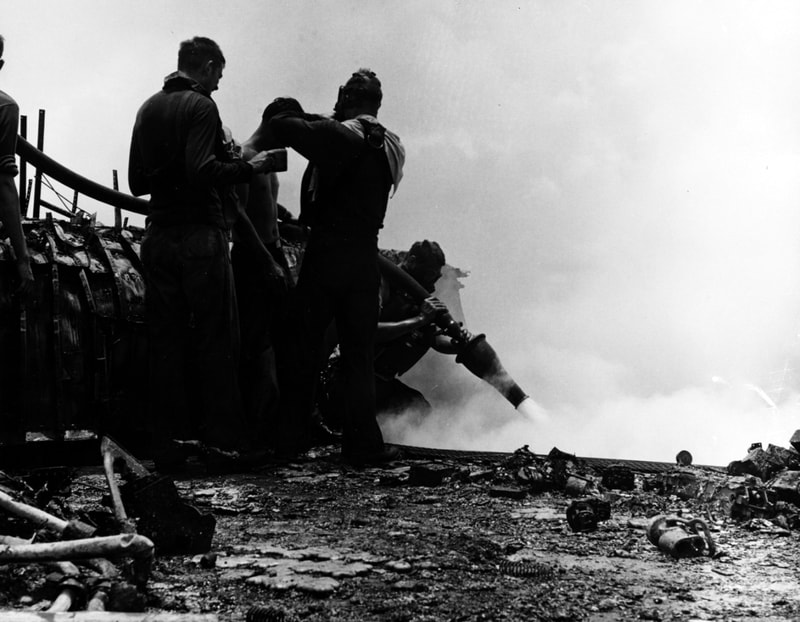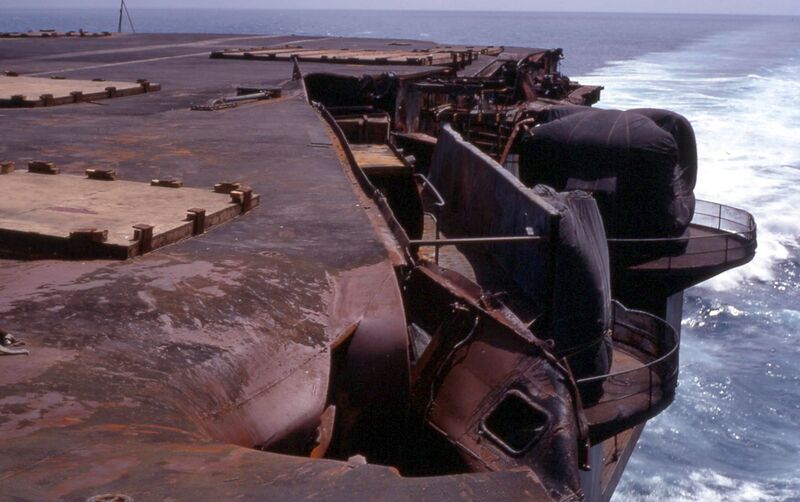- Home
- Magazines
-
Newsletters
- 19 July 2024
- 12 July 2024
- 5 July 2024
- 28 June 2024
- 14 June 2024
- 7 June 2024
- 31 May 2024
- 24 May 2024
- 17 May 2024
- 10 May 2024
- 3 May 2024
- 26 April 2024
- 19 April 2024
- 12 April 2024
- 22 March 2024
- 15 March 2024
- 8 March 2024
- 1 March 2024
- 23 February 2024
- 16 February 2024
- 9 February 2024
- 26 January 2024
- 19 January 2024
- 12 January 2024
- 22 December 2023
- 1 December 2023
- 24 November 2023
- 10 November 2023
- 3 November 2023
- 27 October 2023
- 20 October 2023
- 13 October 2023
- 6 October 2023
- 29 September 2023
- 22 September 2023
- 15 September 2023
- 8 September 2023
- 25 August 2023
- 18 August 2023
- 11 August 2023
- 4 August 2023
- 28 July 2023
- 21 July 2023
- 14 July 2023
- 7 July 2023
- 30 June 2023
- 23 June 2023
- 15 June 2023
- 2 June 2023
- 26 May 2023
- 19 May 2023
- 12 May 2023
- 5 May 2023
- 28 April 2023
- 21 April 2023
- 14 April 2023
- 6 April 2023
- 31 March 2023
- 24 March 2023
- 17 March 2023
- 10 March 2023
- 3 March 2023
- 24 February 2023
- 17 February 2023
- 10 February 2023
- 3 February 2023
- 27 January 2023
- 13 January 2023
- 22 December 2022
- 15 December 2022
- 9 December 2022
- 2 December 2022
- 25 November 2022
- 18 November 2022
- 11 November 2022
- 4 November 2022
- Advertising
- Subscribe
- Articles
-
Galleries
- AOSH Firexpo 2024
- Midvaal Fit to Fight Fire 2024
- WoF KNP 2023 Gallery
- TFA 2023 Gallery
- DMISA Conference 2023
- ETS 2023 Gallery
- Drager Fire Combat and Rescue Challenge 2023
- AOSH Firexpo 2023
- Midvaal Fit to Fight Fire
- WC IFFD 2023
- NMU 13th Fire Management Symposium 2022
- JOIFF Africa Conference 2022
- ETS 2022 Gallery
- TFA 2022 Gallery
- IFFD 2018
- SAESI
- TFA
- WRC 2018
- WRC 2019
- A-OSH/Securex
- IFE AGM 2019
- ETS Ind Fire Comp Nov 2019
- ETS Challenge 2021
- Drager launch
- Drager Fire Combat and Rescue Challenge 2022
- TFA
- Contact
- Home
- Magazines
-
Newsletters
- 19 July 2024
- 12 July 2024
- 5 July 2024
- 28 June 2024
- 14 June 2024
- 7 June 2024
- 31 May 2024
- 24 May 2024
- 17 May 2024
- 10 May 2024
- 3 May 2024
- 26 April 2024
- 19 April 2024
- 12 April 2024
- 22 March 2024
- 15 March 2024
- 8 March 2024
- 1 March 2024
- 23 February 2024
- 16 February 2024
- 9 February 2024
- 26 January 2024
- 19 January 2024
- 12 January 2024
- 22 December 2023
- 1 December 2023
- 24 November 2023
- 10 November 2023
- 3 November 2023
- 27 October 2023
- 20 October 2023
- 13 October 2023
- 6 October 2023
- 29 September 2023
- 22 September 2023
- 15 September 2023
- 8 September 2023
- 25 August 2023
- 18 August 2023
- 11 August 2023
- 4 August 2023
- 28 July 2023
- 21 July 2023
- 14 July 2023
- 7 July 2023
- 30 June 2023
- 23 June 2023
- 15 June 2023
- 2 June 2023
- 26 May 2023
- 19 May 2023
- 12 May 2023
- 5 May 2023
- 28 April 2023
- 21 April 2023
- 14 April 2023
- 6 April 2023
- 31 March 2023
- 24 March 2023
- 17 March 2023
- 10 March 2023
- 3 March 2023
- 24 February 2023
- 17 February 2023
- 10 February 2023
- 3 February 2023
- 27 January 2023
- 13 January 2023
- 22 December 2022
- 15 December 2022
- 9 December 2022
- 2 December 2022
- 25 November 2022
- 18 November 2022
- 11 November 2022
- 4 November 2022
- Advertising
- Subscribe
- Articles
-
Galleries
- AOSH Firexpo 2024
- Midvaal Fit to Fight Fire 2024
- WoF KNP 2023 Gallery
- TFA 2023 Gallery
- DMISA Conference 2023
- ETS 2023 Gallery
- Drager Fire Combat and Rescue Challenge 2023
- AOSH Firexpo 2023
- Midvaal Fit to Fight Fire
- WC IFFD 2023
- NMU 13th Fire Management Symposium 2022
- JOIFF Africa Conference 2022
- ETS 2022 Gallery
- TFA 2022 Gallery
- IFFD 2018
- SAESI
- TFA
- WRC 2018
- WRC 2019
- A-OSH/Securex
- IFE AGM 2019
- ETS Ind Fire Comp Nov 2019
- ETS Challenge 2021
- Drager launch
- Drager Fire Combat and Rescue Challenge 2022
- TFA
- Contact
|
28 July 2023
|
Vintage: The 1967 USS Forrestal fire killed 134 sailors and injured 161
|
|
|
|
|
|
|
On 29 July 1967, a fire broke out on board the aircraft carrier USS Forrestal after an electrical anomaly caused a Zuni rocket on an F-4B Phantom to fire, striking an external fuel tank of an A-4 Skyhawk. The flammable jet fuel spilled across the flight deck, ignited and triggered a chain reaction of explosions that killed 134 sailors and injured 161. At the time, Forrestal was engaged in combat operations in the Gulf of Tonkin, during the Vietnam War. The disaster prompted the Navy to revise its fire fighting practices.
The ship survived but with damage exceeding US$72 million, not including the damage to aircraft. Future United States Senator John McCain and future four-star admiral and US Pacific Fleet Commander Ronald J Zlatoper were among the survivors. Another on-board officer, Lieutenant Tom Treanore, later returned to the ship as its commander and retired an admiral.
The incident was the second of three serious fires to strike American carriers in the 1960s. A 1966 fire aboard USS Oriskany killed 44 and injured 138 and a 1969 fire aboard USS Enterprise killed 28 and injured 314.
The disaster prompted the Navy to revise its fire fighting practices. It also modified its weapon handling procedures and installed a deck wash down system on all carriers. The newly established Farrier Firefighting School in Norfolk, Virginia was named after Chief Gerald W Farrier, the commander of Damage Control Team 8, who was among the first to die in the fire and explosions.
Specialised fire fighting teams
Based on lessons learned during Japanese attacks on vessels during World War II, most sailors on board ships after World War II received training in fighting shipboard fires. These lessons were gradually lost and by 1967, the US Navy had reverted to the Japanese model at Midway and relied on specialised, highly trained damage control and fire fighting teams.
The damage control team specialising in on-deck fire fighting for Forrestal was Damage Control Team No 8, led by Chief Aviation Boatswain's Mate Gerald Farrier. They had been shown films during training of Navy ordnance tests demonstrating how a 1 000lb bomb could be directly exposed to a jet fuel fire for a full ten minutes and still be extinguished and cooled without an explosive cook-off. However, these tests were conducted using the new Mark 83 1 000lb bombs, which featured relatively stable Composition H6 explosive and thicker, heat-resistant cases, compared to their predecessors. Because it is relatively insensitive to heat, shock and electricity, Composition H6 is still used as of 2023 in many types of naval ordnance. It is also designed to deflagrate instead of detonate when it reaches its ignition point in a fire, either melting the case and producing no explosion at all or, at most, a subsonic low order detonation at a fraction of its normal power.
Fire and explosions
While preparing for the second sortie of the day, the aft portion of the flight deck was packed wing-to-wing with twelve A-4E Skyhawk, seven F-4B Phantom II, and two Vigilante aircraft. A total of 27 aircraft were on deck, fully loaded with bombs, rockets, ammunition, and fuel. Several tons of bombs were stored on wooden pallets on deck in the bomb farm. An F-4B Phantom II (No. 110, Bureau Number 153061), flown by Lieutenant Commander James E Bangert and Lieutenant (JG) Lawrence E. McKay from VF-11, was positioned on the aft starboard corner of the deck, pointing about 45 degrees across the ship. It was armed with LAU-10 underwing rocket pods, each containing four unguided five in (127.0 mm) Mk-32 "Zuni" rockets. The Zuni was protected from launching by a safety pin that was only to be removed prior to launch from the catapult.
Zuni rocket launched
At about 10:51 (local time) on 29 July, an electrical power surge in Phantom No 110 occurred during the switch from external to internal power. The electrical surge caused one of the four 5-inch Mk-32 Zuni unguided rockets in a pod on external stores station 2 (port inboard station) to fire. The rocket was later determined to be missing the rocket safety pin, allowing the rocket to launch. The rocket flew about 100 feet (30m) across the flight deck, likely severing the arm of a crewman and ruptured a 400-US-gallon (1 500 L; 330 imp gal) wing-mounted external fuel tank on a Skyhawk from Attack Squadron 46 (VA-46) awaiting launch.
Aircraft struck
The official Navy investigation identified the Skyhawk struck by the Zuni as aircraft No 405, piloted by Lieutenant Commander Fred D. White. Lieutenant Commander John McCain stated in his 1999 book Faith of My Fathers that the missile struck his aircraft, alongside White's A-4 Skyhawk. "On that Saturday morning in July, as I sat in the cockpit of my A-4 preparing to take off, a rocket hit the fuel tank under my airplane." Later accounts relying on his book also state that the rocket struck his A-4 Skyhawk.
The Zuni rocket's warhead safety mechanism prevented it from detonating. The rocket broke apart on impact with the external fuel tank. The highly flammable JP-5 fuel spread on the deck under White's and McCain's A-4s, ignited by numerous fragments of burning rocket propellant and causing an instantaneous conflagration. A sailor standing about 100 feet (30m) forward was struck by a fragment of the Zuni or the exploding fuel tank. A fragment also punctured the centreline external fuel tank of A-4 #310, positioned just aft of the jet blast deflector of catapult number 3. The resulting fire was fanned by 32-knot (59km/h; 37mph) winds and the exhaust of at least three jets. Fire quarters and then general quarters were sounded at 10h52 and 10h53. Condition ZEBRA was declared at 10h59, requiring all hands to secure the ship for maximum survivability, including closing the fire-proof steel doors that separate the ship's compartments.
The official report states that "at least one" Korean War-era 1,000 lb AN-M65 bomb fell from an A-4 Skyhawk to the deck; other reports say two. The bomb fell in a pool of burning fuel between White's and McCain's aircraft.
Damage Control Team No 8, led by Chief Gerald W Farrier, were the first responders to any incident on the flight deck. They immediately took action. Farrier, without taking the time to locate and put on protective clothing, immediately attempted to smother the bomb with a PKP fire extinguisher, attempting to delay the fuel fire from spreading and give the pilots time to escape their aircraft. Based on their training, the team believed they had a ten-minute window to extinguish the fire before the bombs casing would melt resulting in a low-order explosion.
The pilots, preparing to launch, were strapped into their aircraft. When the fire started and quickly spread, they immediately attempted to escape their aircraft. McCain, pilot of A-4 Skyhawk side No 416, next to White's, was among the first to notice the flames, and escaped by scrambling down the nose of his A-4 and jumping off the refuelling probe. Lt Cmdr Robert "Bo" Browning, in an A-4E Skyhawk on the port side, escaped by crossing the flight deck and ducking under the tails of F-4B Phantoms spotted along the starboard side. CVW-17 operations officer, Lt Cmdr. Herbert A Hope of VA-46, escaped by jumping out of the Skyhawk cockpit and rolling off the flight deck and into the starboard man-overboard net. He went to the hangar deck and took command of a fire fighting team.
Bombs detonate
Despite Farrier's constant effort to cool the bomb that had fallen to the deck, the casing suddenly split open and the explosive began to burn brightly. Farrier, recognising that a lethal cook-off was imminent, shouted for his firefighters to withdraw but the bomb detonated, one minute and 36 seconds after the start of the fire. The unstable Composition B in the old bombs enhanced the power of the explosions. Thirty-five personnel were in close proximity to the blast. Two hose teams were decimated; Farrier and all but three of his men were killed instantly. Twenty-seven men were injured.
"I saw a dozen people running... into the fire, just before the bomb cooked off," Lt Cmdr Browning later said. McCain saw another pilot on fire and turned to help him, when the first bomb detonated. McCain was knocked backwards 10 feet (3.0 m), struck by shrapnel and wounded. White managed to get out of his burning aircraft but was killed by the detonation of the first bomb. Not all of the pilots were able to get out of their aircraft in time. Lt Ken McMillen escaped. LT(JG) Don Dameworth and LT(JG) David Dollarhide were injured escaping their aircraft. Lt Cmdrs Gerry Stark and Dennis Barton were missing.
Fire enters lower decks
The first bomb detonation destroyed White's and McCain's aircraft, blew a crater in the armoured flight deck, and sprayed the deck and crew with bomb fragments and shrapnel from the destroyed aircraft. Burning fuel poured through the hole in the deck into occupied berthing compartments below. In the tightly packed formation on the aft deck, every aircraft, all fully fuelled and bomb-laden, was damaged. All seven F-4s caught fire.
Lieutenant James J. Campbell recoiled for a few moments in stunned dismay as burning torches tumbled toward him, until their screams stirred him to action. Several men jumped or were blown into the ocean. Neighbouring ships came alongside and pulled the men from the water. When Browning got back on deck, he recalled, "The port quarter of the flight deck where I was is no longer there."
Two more of the unstable 1 000lb bombs exploded 10 seconds after the first, and a fourth blew up 44 seconds after that. A total of ten bombs exploded during the fire. Bodies and debris were hurled as far as the bow of the ship.
In less than five minutes, seven or eight 1 000-pound bombs, one 750-pound bomb, one 500-pound (227kg) bomb and several missile and rocket warheads heated by the fire exploded with varying degrees of violence. Several of the explosions of the 1 000-pound Korean War-era AN-M65 Composition B bombs were estimated to be as much as 50 percent more powerful than a standard 1 000-pound bomb, due to the badly degraded Composition B. The ninth explosion was attributed to a sympathetic detonation between an AN-M65 and a newer 500-lb M117 H6 bomb that were positioned next to each other. The other H6-based bombs performed as designed and either burned on the deck or were jettisoned but did not detonate under the heat of the fires. The ongoing detonations prevented fire suppression efforts during the first critical minutes of the disaster.
The explosions tore seven holes in the flight deck. About 40 000 US gallons (150 000L; 33 000 imp gal) of burning jet fuel from ruptured aircraft tanks poured across the deck and through the holes in the deck into the aft hangar bay and berthing compartments. The explosions and fire killed 50 night crew personnel who were sleeping in berthing compartments below the aft portion of the flight deck. 41 additional crew members were killed in internal compartments in the aft portion of Forrestal.
Personnel from all over the ship rallied to fight the fires and control further damage. They pushed aircraft, missiles, rockets, bombs, and burning fragments over the side. Sailors manually jettisoned numerous 250 and 500 lb bombs by rolling them along the deck and off the side. Sailors without training in firefighting and damage control took over for the depleted damage control teams. Unknowingly, inexperienced hose teams using seawater washed away the efforts of others attempting to smother the fire with foam.
Fires controlled
The destroyer USS George K MacKenzie pulled men from the water and directed its fire hoses on the burning ship. Another destroyer, USS Rupertus, maneuverer as close as 20 feet (6m) to Forrestal for 90 minutes, directing her own on-board fire hoses at the burning flight and hangar deck on the starboard side and at the port-side aft five-inch gun mount. Rear Admiral and Task Group commander Harvey P Lanham, aboard Forrestal, called the actions of Rupertus commanding officer Commander Edwin Burke an "act of magnificent seamanship". At 11h47, Forrestal reported the flight deck fire was under control. About 30 minutes later, they had put out the flight deck fires. Fire fighting crews continued to fight fires below deck for many more hours.
Undetonated bombs were continually found during the afternoon. LT(JG) Robert Cates, the carrier's explosive ordnance demolition officer, recounted later how he had "noticed that there was a 500-pound bomb and a 750-pound bomb in the middle of the flight deck... that were still smoking. They hadn't detonated or anything; they were just sitting there smoking. So I went up and defused them and had them jettisoned." Another sailor volunteered to be lowered by line through a hole in the flight deck to defuse a live bomb that had dropped to the 03 level, even though the compartment was still on fire and full of smoke. Later on, Cates had himself lowered into the compartment to attach a line to the bomb so it could be hauled up to the deck and jettisoned.
Throughout the day, the ship's medical staff worked in dangerous conditions to assist their comrades. The number of casualties quickly overwhelmed the ship's medical teams and Forrestal was escorted by USS Henry W Tucker to rendezvous with hospital ship USS Repose at 20h54, allowing the crew to begin transferring the dead and wounded at 22h53. Fire fighter Milt Crutchley said, "The worst was going back into the burned-out areas later and finding your dead and wounded shipmates." He said it was extremely difficult to remove charred, blackened bodies locked in rigor mortis "while maintaining some sort of dignity for your fallen comrades."
At 17h05, a muster of Forrestal crewmen, both in the carrier and aboard other ships, was begun. It took many hours to account for the ship's crew. Wounded and dead had been transferred to other ships and some men were missing, either burned beyond recognition or blown overboard. At 18h44, fires were still burning in the ship's carpenter shop and in the aft compartments. At 20h33, the fires in the 02 and 03 levels were contained but the areas were still too hot to enter. Fire fighting was greatly hampered because of smoke and heat. Crew members cut additional holes in the flight deck to help fight fires in the compartments below. At 12h20 on 30 July, 14 hours after the fires had begun, all the fires were controlled. Forrestal crew members continued to put out hot spots, clear smoke and cool hot steel on the 02 and 03 levels. The fires were declared out at 04h00.
Aftermath
The fire left 134 men dead and 161 more injured. It was the greatest loss of life on a US Navy ship since World War II. Destroyed deck tractors and RA-5C aircraft surrounded by fire fighting foam in the aftermath of the fire.
Of the 73 aircraft aboard the carrier, 21 were destroyed: seven F-4B Phantom IIs, eleven A-4E Skyhawks and three RA-5C Vigilantes. A further 40 were damaged.
The ship's chaplains held a memorial service for the dead in Hangar Bay One, which was attended by more than 2 000 of Forrestal's crew.
Temporary repairs
On 31 July, Forrestal arrived at Naval Air Station Cubi Point in the Philippines, to undertake repairs sufficient to allow the ship to return to the United States. During welcoming ceremonies, a fire alarm signal alerted crews to a fire in mattresses within the burned-out compartments.
Legacy
18 crewmen were buried at Arlington National Cemetery. Names of the dead are also listed on the Vietnam Veterans Memorial.
On 29 July 2017, the USS Forrestal Association commemorated the 50th anniversary of the incident. Members of the military, survivors of the disaster, and family members gathered to memorialize those lost in this incident. Active duty personnel presented American flags to represent each sailor who died.
The non-profit USS Forrestal Association was formed in 1990 to preserve the memory of those lost in the tragedy.
Farrier Fire Fighting School established
The Farrier Fire Fighting School at Naval Station Norfolk, Virginia, is named after Chief Gerald W Farrier, the commander of Damage Control Team 8, who was killed in the initial explosion. The school hosts an annual memorial remembering the sailors who lost their lives aboard the Forrestal.
Lessons learned
The fire revealed that Forrestal lacked a heavy-duty, armoured forklift needed to jettison aircraft, particularly heavier planes like the RA-5C Vigilante, as well as heavy or damaged ordnance.
The United States Navy uses the Forrestal fire and the lessons learned from it when teaching damage control and ammunition safety. The flight-deck film of the flight operations, titled "Learn or Burn", became mandatory viewing for firefighting trainees. All new Navy recruits are required to view a training video titled "Trial by Fire: A Carrier Fights for Life", produced from footage of the fire and damage control efforts, both successful and unsuccessful.
Footage revealed that damage-control teams sprayed firefighting foam on the deck to smother the burning fuel, which was the correct procedure but their efforts were negated by crewmen on the other side of the deck who sprayed seawater, which washed the foam away. The seawater worsened the situation by washing burning fuel through the holes in the flight deck and into the decks below. In response, a "wash-down" system, which floods the flight deck with foam or water, was incorporated into all carriers, with the first being installed aboard Franklin D Roosevelt during her 1968–1969 refit. Many other fire-safety improvements also stemmed from this incident.
Due to the first bomb blast, which killed nearly all of the trained firefighters on the ship, the remaining crew, who had no formal fire fighting training, were forced to improvise. All current Navy recruits receive week-long training in compartment identification, fixed and portable extinguishers, battle dress, self-contained breathing apparatus and emergency escape breathing devices. Recruits are tested on their knowledge and skills by having to use portable extinguishers and charged hoses to fight fires, as well as demonstrating the ability to egress from compartments that are heated and filled with smoke.
Sources: Wikipedia, US Naval History
The ship survived but with damage exceeding US$72 million, not including the damage to aircraft. Future United States Senator John McCain and future four-star admiral and US Pacific Fleet Commander Ronald J Zlatoper were among the survivors. Another on-board officer, Lieutenant Tom Treanore, later returned to the ship as its commander and retired an admiral.
The incident was the second of three serious fires to strike American carriers in the 1960s. A 1966 fire aboard USS Oriskany killed 44 and injured 138 and a 1969 fire aboard USS Enterprise killed 28 and injured 314.
The disaster prompted the Navy to revise its fire fighting practices. It also modified its weapon handling procedures and installed a deck wash down system on all carriers. The newly established Farrier Firefighting School in Norfolk, Virginia was named after Chief Gerald W Farrier, the commander of Damage Control Team 8, who was among the first to die in the fire and explosions.
Specialised fire fighting teams
Based on lessons learned during Japanese attacks on vessels during World War II, most sailors on board ships after World War II received training in fighting shipboard fires. These lessons were gradually lost and by 1967, the US Navy had reverted to the Japanese model at Midway and relied on specialised, highly trained damage control and fire fighting teams.
The damage control team specialising in on-deck fire fighting for Forrestal was Damage Control Team No 8, led by Chief Aviation Boatswain's Mate Gerald Farrier. They had been shown films during training of Navy ordnance tests demonstrating how a 1 000lb bomb could be directly exposed to a jet fuel fire for a full ten minutes and still be extinguished and cooled without an explosive cook-off. However, these tests were conducted using the new Mark 83 1 000lb bombs, which featured relatively stable Composition H6 explosive and thicker, heat-resistant cases, compared to their predecessors. Because it is relatively insensitive to heat, shock and electricity, Composition H6 is still used as of 2023 in many types of naval ordnance. It is also designed to deflagrate instead of detonate when it reaches its ignition point in a fire, either melting the case and producing no explosion at all or, at most, a subsonic low order detonation at a fraction of its normal power.
Fire and explosions
While preparing for the second sortie of the day, the aft portion of the flight deck was packed wing-to-wing with twelve A-4E Skyhawk, seven F-4B Phantom II, and two Vigilante aircraft. A total of 27 aircraft were on deck, fully loaded with bombs, rockets, ammunition, and fuel. Several tons of bombs were stored on wooden pallets on deck in the bomb farm. An F-4B Phantom II (No. 110, Bureau Number 153061), flown by Lieutenant Commander James E Bangert and Lieutenant (JG) Lawrence E. McKay from VF-11, was positioned on the aft starboard corner of the deck, pointing about 45 degrees across the ship. It was armed with LAU-10 underwing rocket pods, each containing four unguided five in (127.0 mm) Mk-32 "Zuni" rockets. The Zuni was protected from launching by a safety pin that was only to be removed prior to launch from the catapult.
Zuni rocket launched
At about 10:51 (local time) on 29 July, an electrical power surge in Phantom No 110 occurred during the switch from external to internal power. The electrical surge caused one of the four 5-inch Mk-32 Zuni unguided rockets in a pod on external stores station 2 (port inboard station) to fire. The rocket was later determined to be missing the rocket safety pin, allowing the rocket to launch. The rocket flew about 100 feet (30m) across the flight deck, likely severing the arm of a crewman and ruptured a 400-US-gallon (1 500 L; 330 imp gal) wing-mounted external fuel tank on a Skyhawk from Attack Squadron 46 (VA-46) awaiting launch.
Aircraft struck
The official Navy investigation identified the Skyhawk struck by the Zuni as aircraft No 405, piloted by Lieutenant Commander Fred D. White. Lieutenant Commander John McCain stated in his 1999 book Faith of My Fathers that the missile struck his aircraft, alongside White's A-4 Skyhawk. "On that Saturday morning in July, as I sat in the cockpit of my A-4 preparing to take off, a rocket hit the fuel tank under my airplane." Later accounts relying on his book also state that the rocket struck his A-4 Skyhawk.
The Zuni rocket's warhead safety mechanism prevented it from detonating. The rocket broke apart on impact with the external fuel tank. The highly flammable JP-5 fuel spread on the deck under White's and McCain's A-4s, ignited by numerous fragments of burning rocket propellant and causing an instantaneous conflagration. A sailor standing about 100 feet (30m) forward was struck by a fragment of the Zuni or the exploding fuel tank. A fragment also punctured the centreline external fuel tank of A-4 #310, positioned just aft of the jet blast deflector of catapult number 3. The resulting fire was fanned by 32-knot (59km/h; 37mph) winds and the exhaust of at least three jets. Fire quarters and then general quarters were sounded at 10h52 and 10h53. Condition ZEBRA was declared at 10h59, requiring all hands to secure the ship for maximum survivability, including closing the fire-proof steel doors that separate the ship's compartments.
The official report states that "at least one" Korean War-era 1,000 lb AN-M65 bomb fell from an A-4 Skyhawk to the deck; other reports say two. The bomb fell in a pool of burning fuel between White's and McCain's aircraft.
Damage Control Team No 8, led by Chief Gerald W Farrier, were the first responders to any incident on the flight deck. They immediately took action. Farrier, without taking the time to locate and put on protective clothing, immediately attempted to smother the bomb with a PKP fire extinguisher, attempting to delay the fuel fire from spreading and give the pilots time to escape their aircraft. Based on their training, the team believed they had a ten-minute window to extinguish the fire before the bombs casing would melt resulting in a low-order explosion.
The pilots, preparing to launch, were strapped into their aircraft. When the fire started and quickly spread, they immediately attempted to escape their aircraft. McCain, pilot of A-4 Skyhawk side No 416, next to White's, was among the first to notice the flames, and escaped by scrambling down the nose of his A-4 and jumping off the refuelling probe. Lt Cmdr Robert "Bo" Browning, in an A-4E Skyhawk on the port side, escaped by crossing the flight deck and ducking under the tails of F-4B Phantoms spotted along the starboard side. CVW-17 operations officer, Lt Cmdr. Herbert A Hope of VA-46, escaped by jumping out of the Skyhawk cockpit and rolling off the flight deck and into the starboard man-overboard net. He went to the hangar deck and took command of a fire fighting team.
Bombs detonate
Despite Farrier's constant effort to cool the bomb that had fallen to the deck, the casing suddenly split open and the explosive began to burn brightly. Farrier, recognising that a lethal cook-off was imminent, shouted for his firefighters to withdraw but the bomb detonated, one minute and 36 seconds after the start of the fire. The unstable Composition B in the old bombs enhanced the power of the explosions. Thirty-five personnel were in close proximity to the blast. Two hose teams were decimated; Farrier and all but three of his men were killed instantly. Twenty-seven men were injured.
"I saw a dozen people running... into the fire, just before the bomb cooked off," Lt Cmdr Browning later said. McCain saw another pilot on fire and turned to help him, when the first bomb detonated. McCain was knocked backwards 10 feet (3.0 m), struck by shrapnel and wounded. White managed to get out of his burning aircraft but was killed by the detonation of the first bomb. Not all of the pilots were able to get out of their aircraft in time. Lt Ken McMillen escaped. LT(JG) Don Dameworth and LT(JG) David Dollarhide were injured escaping their aircraft. Lt Cmdrs Gerry Stark and Dennis Barton were missing.
Fire enters lower decks
The first bomb detonation destroyed White's and McCain's aircraft, blew a crater in the armoured flight deck, and sprayed the deck and crew with bomb fragments and shrapnel from the destroyed aircraft. Burning fuel poured through the hole in the deck into occupied berthing compartments below. In the tightly packed formation on the aft deck, every aircraft, all fully fuelled and bomb-laden, was damaged. All seven F-4s caught fire.
Lieutenant James J. Campbell recoiled for a few moments in stunned dismay as burning torches tumbled toward him, until their screams stirred him to action. Several men jumped or were blown into the ocean. Neighbouring ships came alongside and pulled the men from the water. When Browning got back on deck, he recalled, "The port quarter of the flight deck where I was is no longer there."
Two more of the unstable 1 000lb bombs exploded 10 seconds after the first, and a fourth blew up 44 seconds after that. A total of ten bombs exploded during the fire. Bodies and debris were hurled as far as the bow of the ship.
In less than five minutes, seven or eight 1 000-pound bombs, one 750-pound bomb, one 500-pound (227kg) bomb and several missile and rocket warheads heated by the fire exploded with varying degrees of violence. Several of the explosions of the 1 000-pound Korean War-era AN-M65 Composition B bombs were estimated to be as much as 50 percent more powerful than a standard 1 000-pound bomb, due to the badly degraded Composition B. The ninth explosion was attributed to a sympathetic detonation between an AN-M65 and a newer 500-lb M117 H6 bomb that were positioned next to each other. The other H6-based bombs performed as designed and either burned on the deck or were jettisoned but did not detonate under the heat of the fires. The ongoing detonations prevented fire suppression efforts during the first critical minutes of the disaster.
The explosions tore seven holes in the flight deck. About 40 000 US gallons (150 000L; 33 000 imp gal) of burning jet fuel from ruptured aircraft tanks poured across the deck and through the holes in the deck into the aft hangar bay and berthing compartments. The explosions and fire killed 50 night crew personnel who were sleeping in berthing compartments below the aft portion of the flight deck. 41 additional crew members were killed in internal compartments in the aft portion of Forrestal.
Personnel from all over the ship rallied to fight the fires and control further damage. They pushed aircraft, missiles, rockets, bombs, and burning fragments over the side. Sailors manually jettisoned numerous 250 and 500 lb bombs by rolling them along the deck and off the side. Sailors without training in firefighting and damage control took over for the depleted damage control teams. Unknowingly, inexperienced hose teams using seawater washed away the efforts of others attempting to smother the fire with foam.
Fires controlled
The destroyer USS George K MacKenzie pulled men from the water and directed its fire hoses on the burning ship. Another destroyer, USS Rupertus, maneuverer as close as 20 feet (6m) to Forrestal for 90 minutes, directing her own on-board fire hoses at the burning flight and hangar deck on the starboard side and at the port-side aft five-inch gun mount. Rear Admiral and Task Group commander Harvey P Lanham, aboard Forrestal, called the actions of Rupertus commanding officer Commander Edwin Burke an "act of magnificent seamanship". At 11h47, Forrestal reported the flight deck fire was under control. About 30 minutes later, they had put out the flight deck fires. Fire fighting crews continued to fight fires below deck for many more hours.
Undetonated bombs were continually found during the afternoon. LT(JG) Robert Cates, the carrier's explosive ordnance demolition officer, recounted later how he had "noticed that there was a 500-pound bomb and a 750-pound bomb in the middle of the flight deck... that were still smoking. They hadn't detonated or anything; they were just sitting there smoking. So I went up and defused them and had them jettisoned." Another sailor volunteered to be lowered by line through a hole in the flight deck to defuse a live bomb that had dropped to the 03 level, even though the compartment was still on fire and full of smoke. Later on, Cates had himself lowered into the compartment to attach a line to the bomb so it could be hauled up to the deck and jettisoned.
Throughout the day, the ship's medical staff worked in dangerous conditions to assist their comrades. The number of casualties quickly overwhelmed the ship's medical teams and Forrestal was escorted by USS Henry W Tucker to rendezvous with hospital ship USS Repose at 20h54, allowing the crew to begin transferring the dead and wounded at 22h53. Fire fighter Milt Crutchley said, "The worst was going back into the burned-out areas later and finding your dead and wounded shipmates." He said it was extremely difficult to remove charred, blackened bodies locked in rigor mortis "while maintaining some sort of dignity for your fallen comrades."
At 17h05, a muster of Forrestal crewmen, both in the carrier and aboard other ships, was begun. It took many hours to account for the ship's crew. Wounded and dead had been transferred to other ships and some men were missing, either burned beyond recognition or blown overboard. At 18h44, fires were still burning in the ship's carpenter shop and in the aft compartments. At 20h33, the fires in the 02 and 03 levels were contained but the areas were still too hot to enter. Fire fighting was greatly hampered because of smoke and heat. Crew members cut additional holes in the flight deck to help fight fires in the compartments below. At 12h20 on 30 July, 14 hours after the fires had begun, all the fires were controlled. Forrestal crew members continued to put out hot spots, clear smoke and cool hot steel on the 02 and 03 levels. The fires were declared out at 04h00.
Aftermath
The fire left 134 men dead and 161 more injured. It was the greatest loss of life on a US Navy ship since World War II. Destroyed deck tractors and RA-5C aircraft surrounded by fire fighting foam in the aftermath of the fire.
Of the 73 aircraft aboard the carrier, 21 were destroyed: seven F-4B Phantom IIs, eleven A-4E Skyhawks and three RA-5C Vigilantes. A further 40 were damaged.
The ship's chaplains held a memorial service for the dead in Hangar Bay One, which was attended by more than 2 000 of Forrestal's crew.
Temporary repairs
On 31 July, Forrestal arrived at Naval Air Station Cubi Point in the Philippines, to undertake repairs sufficient to allow the ship to return to the United States. During welcoming ceremonies, a fire alarm signal alerted crews to a fire in mattresses within the burned-out compartments.
Legacy
18 crewmen were buried at Arlington National Cemetery. Names of the dead are also listed on the Vietnam Veterans Memorial.
On 29 July 2017, the USS Forrestal Association commemorated the 50th anniversary of the incident. Members of the military, survivors of the disaster, and family members gathered to memorialize those lost in this incident. Active duty personnel presented American flags to represent each sailor who died.
The non-profit USS Forrestal Association was formed in 1990 to preserve the memory of those lost in the tragedy.
Farrier Fire Fighting School established
The Farrier Fire Fighting School at Naval Station Norfolk, Virginia, is named after Chief Gerald W Farrier, the commander of Damage Control Team 8, who was killed in the initial explosion. The school hosts an annual memorial remembering the sailors who lost their lives aboard the Forrestal.
Lessons learned
The fire revealed that Forrestal lacked a heavy-duty, armoured forklift needed to jettison aircraft, particularly heavier planes like the RA-5C Vigilante, as well as heavy or damaged ordnance.
The United States Navy uses the Forrestal fire and the lessons learned from it when teaching damage control and ammunition safety. The flight-deck film of the flight operations, titled "Learn or Burn", became mandatory viewing for firefighting trainees. All new Navy recruits are required to view a training video titled "Trial by Fire: A Carrier Fights for Life", produced from footage of the fire and damage control efforts, both successful and unsuccessful.
Footage revealed that damage-control teams sprayed firefighting foam on the deck to smother the burning fuel, which was the correct procedure but their efforts were negated by crewmen on the other side of the deck who sprayed seawater, which washed the foam away. The seawater worsened the situation by washing burning fuel through the holes in the flight deck and into the decks below. In response, a "wash-down" system, which floods the flight deck with foam or water, was incorporated into all carriers, with the first being installed aboard Franklin D Roosevelt during her 1968–1969 refit. Many other fire-safety improvements also stemmed from this incident.
Due to the first bomb blast, which killed nearly all of the trained firefighters on the ship, the remaining crew, who had no formal fire fighting training, were forced to improvise. All current Navy recruits receive week-long training in compartment identification, fixed and portable extinguishers, battle dress, self-contained breathing apparatus and emergency escape breathing devices. Recruits are tested on their knowledge and skills by having to use portable extinguishers and charged hoses to fight fires, as well as demonstrating the ability to egress from compartments that are heated and filled with smoke.
Sources: Wikipedia, US Naval History
Quick navigation
Social
|
Who are we?FRI Media (Pty) Ltd is an independent publisher of technical magazines including the well-read and respected Fire and Rescue International, its weekly FRI Newsletter and the Disaster Management Journal. We also offer a complete marketing and publishing package, which include design, printing and corporate wear and gifts. |
Weekly FRI Newsletter |
© Copyright 2018 Fire and Rescue International. All Rights Reserved.

